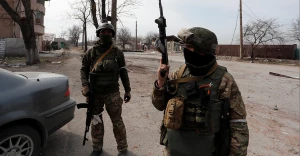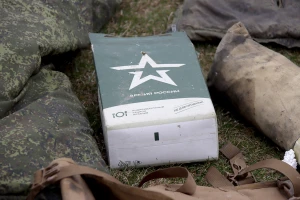
Wagner fighters deployed to Belarus to create tension on Ukraine border – Belarusian military expert
Mercenaries from Russia's Wagner Group were deployed to Belarus to create tension on the border with Ukraine and to unnerve NATO countries, like Poland and the Baltic states
Independent military observer and leading Belarusian expert on defense and the military-industrial complex Alexander Alesin said this on Espreso TV.
"One of the goals of deploying the Wagner mercenaries to Belarus is to create tension on the border with Ukraine. To distract as many of Ukraine's reserves as possible, which are needed during the counteroffensive, so that they get stuck on the border and do not help the counteroffensive. In addition, there is a desire to make Poland and the Baltic states nervous," he said.
Alesin added that it was recently announced that the Belarusian Special Forces will conduct joint exercises with the Wagner soldiers at training grounds near Brest.
"I believe that this is an act of information warfare - a response to Poland for its hostile stance towards Belarus. I don't think it will become a hot war. Belarus does not want to fight with NATO. This is a threat of military defeat and loss of economic benefits that Belarus gets not by entering the war, but by supplying military and dual-use goods to Russia," the expert concluded.
How the Wagner soldiers ended up in Belarus
After the mutiny of Wagner PMC leader Yevgeny Prigozhin in late June, the Kremlin announced the relocation of Wagner mercenaries to Belarus.
On June 27, self-proclaimed President of Belarus Alexander Lukashenko confirmed the arrival of Yevgeny Prigozhin in the country. According to him, Wagner mercenaries who arrived with him will not guard the Russian tactical nuclear weapons deployed there. However, Lukashenko emphasized that he expects the mercenaries to help in the defense of Belarus, without specifying the potential source of the country's perceived threat.
On June 29, a satellite recorded the construction of a tent camp near Asipovichy in the Mogilev region of Belarus, and on July 3, Russian media published a photo of an alleged Wagner camp.
On July 11, the Belarusian Ministry of Defense stated that the Wagner mercenaries would train the Belarusian army.
On July 14, media reported that training sessions with units of the territorial troops were taking place near Asipovichy (Belarus), where Wagner PMC fighters were acting as instructors in some military disciplines.
On the morning of July 15, a large convoy of cars and trucks with license plates of the so-called DPR and LPR was spotted in Belarus. Ukraine’s State Border Guard Service confirmed that those were mercenaries of the Wagner PMC.
On Sunday, July 16, the Belarusian Hajun monitoring group reported that two flags - of Russia and the Wagner PMC - had been installed at the checkpoint on the border between Belarus and Russia.
Wagner Group announced that on July 30, their main base in the Russian Federation, located in the village of Molkino in Krasnodar Krai, would be closed.
On July 19, Wagner PMC financier Yevgeny Prigozhin spoke to Wagner fighters in Belarus, calling the situation at the front a "disgrace" and urging mercenaries to "wait for the moment to show their full potential."
On July 20, it became known that another convoy of Wagner PMC fighters arrived in Belarus, the ninth since the mercenaries entered the country, Belorussian Hajun reports.
As of the morning of July 20, mercenaries from the Wagner private military company continue to arrive in Belarus, but do not pose a threat to Ukraine.
The National Resistance Center reported that a clash between Wagner PMC mercenaries and local border guards took place in the Gomel region of Belarus.
- News














































